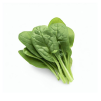The Rich History and Tradition of Jeonju Bibimbap: Korea’s Culinary Treasure
Origins Rooted in Royalty: The Birthplace of Jeonju Bibimbap
Jeonju Bibimbap, one of Korea’s most iconic dishes, traces its roots back to the royal court of the Joseon Dynasty. Jeonju, known as the “Cultural Capital” of Korea, was celebrated for its abundant agricultural resources and culinary innovation. This dish was initially prepared as a luxurious meal for royalty, combining the freshest seasonal ingredients to create a harmonious balance of flavors.
A Symphony of Ingredients: What Makes Jeonju Bibimbap Unique?
Unlike other regional variations, Jeonju Bibimbap is renowned for its meticulous preparation and the use of high-quality ingredients. The dish features:
- Cooked short-grain rice mixed with beef broth for extra flavor.
- A vibrant array of vegetables, including julienned radishes, spinach, bean sprouts, and mushrooms.
- Perfectly seasoned beef, often cooked to tender perfection.
- Gochujang (fermented red chili paste), offering a sweet and spicy kick.
- A raw egg yolk, placed delicately atop the rice for a creamy texture.
- Crispy seaweed and sesame seeds, adding layers of texture and nuttiness.
Cultural Symbolism: More Than Just a Meal
Jeonju Bibimbap is more than a medley of delicious ingredients. It symbolizes balance and harmony, reflecting the Korean philosophy of “Yin and Yang” through its diverse yet complementary components. Each color and flavor has a role in nourishing the body and mind, making it a spiritual experience as well as a culinary delight.
A Culinary Showstopper: Bibimbap’s Rise to Global Fame
Though rooted in tradition, Jeonju Bibimbap has evolved into a global phenomenon. Its vibrant presentation and rich flavors captivate food enthusiasts worldwide. Jeonju, as a UNESCO-designated City of Gastronomy, has played a significant role in promoting this dish through festivals and events dedicated to its history and preparation.
Secrets of the Stone Pot: The Art of Cooking Jeonju Bibimbap
A distinctive feature of authentic Jeonju Bibimbap is its preparation in a hot stone pot, or “dolsot.” This method creates a crispy rice layer at the bottom, known as “nurungji,” adding an irresistible crunch to the dish. The heat of the pot ensures the ingredients blend perfectly, enhancing the depth of flavors with every bite.
Preserving Tradition: Jeonju’s Dedication to Authentic Bibimbap
Jeonju’s dedication to preserving the authenticity of its Bibimbap is evident in its local culinary schools and restaurants. Traditional recipes are passed down through generations, ensuring that each serving maintains the spirit and taste of its historic origins.
Your Invitation to Indulge: Experiencing Jeonju Bibimbap
To fully appreciate the essence of Jeonju Bibimbap, visiting Jeonju Hanok Village is a must. Here, you can savor the dish in its birthplace, surrounded by traditional Korean architecture and warm hospitality. Each bite is a testament to centuries of culinary excellence.
The Future of Jeonju Bibimbap: Tradition Meets Innovation
While staying true to its roots, Jeonju Bibimbap continues to inspire modern interpretations. Chefs worldwide experiment with unique ingredients and techniques, ensuring this timeless dish remains a dynamic and cherished part of global cuisine.
Discover Traditional South Korean Recipes Discover Traditional Asian Recipes You may like this also: Colombian Bandeja PaisaIngredients
Vegetables:
Protein:
Other:
Bibimbap Sauce:
Instructions
Prepare the Sauce:
-
In a bowl, mix together all the sauce ingredients: gochujang, sesame oil, sugar, water, vinegar, and minced garlic. Adjust the sweetness or spiciness according to your preference. Set aside.
Cook the Vegetables:
-
Spinach: Blanch the spinach in boiling water for about 1-2 minutes, then quickly rinse with cold water to stop the cooking process. Squeeze out excess water and season with a pinch of salt and a few drops of sesame oil.
-
Bean Sprouts: Blanch bean sprouts for about 1-2 minutes, rinse with cold water, and mix with a pinch of salt and sesame oil.
-
Carrot, Zucchini, and Bell Pepper: Sauté each vegetable separately in a little bit of vegetable oil with a pinch of salt until tender but still crisp.
-
Mushrooms: Sauté mushrooms with minced garlic, soy sauce, and a bit of sesame oil until tender.
Cook the Protein:
-
In a pan, heat a bit of vegetable oil. Add the sliced beef (or tofu) and cook until browned. Add soy sauce, minced garlic, and sesame oil. Cook for another 2-3 minutes until fully cooked and flavorful.
Fry the Egg:
-
In a separate pan, fry the eggs sunny side up. The yolk should remain runny.
Assemble the Bibimbap:
-
In individual serving bowls, place a portion of warm rice at the bottom.
-
Arrange the cooked vegetables and protein around the edges of the bowl on top of the rice.
-
Place the fried egg in the center.
-
Drizzle a spoonful of the bibimbap sauce over the top.
Garnish and Serve:
-
Sprinkle sesame seeds on top.
-
Serve with more bibimbap sauce on the side so that each person can add as much as they like.
-
-
Your Korean Bibimbap is ready. Jal meokgetseumnida!























